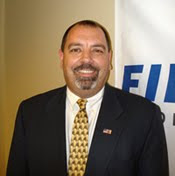SUMMARY: In response to the information collected from the terrorist responsible for the attempted bombing of an airplane on Christmas and other intelligence gathered from our security agencies, the TSA is increasing airline security. The new regulations are expected to include further in-flight restrictions in passengers’ movement, more random pre-flight screening of passengers and an increase in the number of federal air marshals on flights.
ANALYSIS: These additional measures are designed to better control and observe passengers during flight. As with this recent attempt and the attempt that Richard Reid made, observant fellow passengers were able to thwart these attempts. Good fortune was also a major factor in preventing an in-flight bombing.
As travelers endure more delays, more evasive screening and restricted movement while in flight, it is important to realize that terrorism is a very real and growing threat. Few people realize that the chemical being widely used for explosive devices, called PETN, is widely used in medicine. Lentonitrat, which is used for the treatment of heart disease, is almost pure PETN. Less than three ounces of this chemical was sewn into the undergarments of the failed Christmas Day bomber. This chemical is odorless and is almost impossible to detect with the equipment currently employed at the airport screening areas.
Fortunately, PETN requires a lot of heat to explode and usually the detonation device or the ignition process is identified or fails before the explosion takes place. We may not always be so lucky, as the terrorists keep trying and improving their methods. The TSA did not help matters when they released their Security Procedures by mistake a couple of months ago, which I previously commented on in this forum.
Travelers and individuals in general need to be vigilant to prevent future terrorist attacks. Some tips to help you safeguard yourself, community and fellow travelers:
- Look for individuals who exhibit apprehension or nervousness as they approach security, or may be wearing too many clothes or not dressed appropriately for the conditions.
- Report any odd, unexplained odors, which could be a chemical-based explosive or detonation device, or any liquids leaking from containers or unusual stains on packages and luggage.
- Report anyone in possession of too many batteries, “unique’’ batteries, unexplainable wires or too many matches.
- Watch for bags that appear too heavy for their size when being handled.
If you see any of these characteristics, contact the authorities. Remember, that in 2009, the U.S. arrested 15 people for serious terrorist activities and almost all of them were U.S. citizens. The game is changing every day and the stakes are getting much higher.




